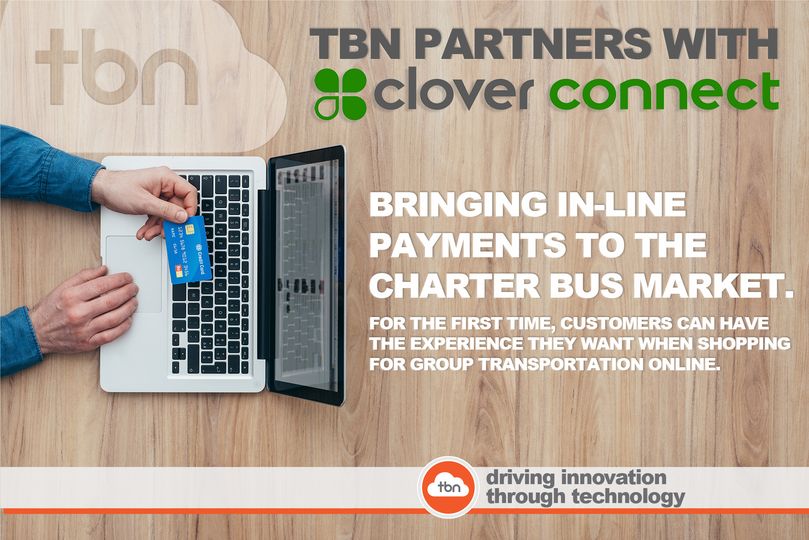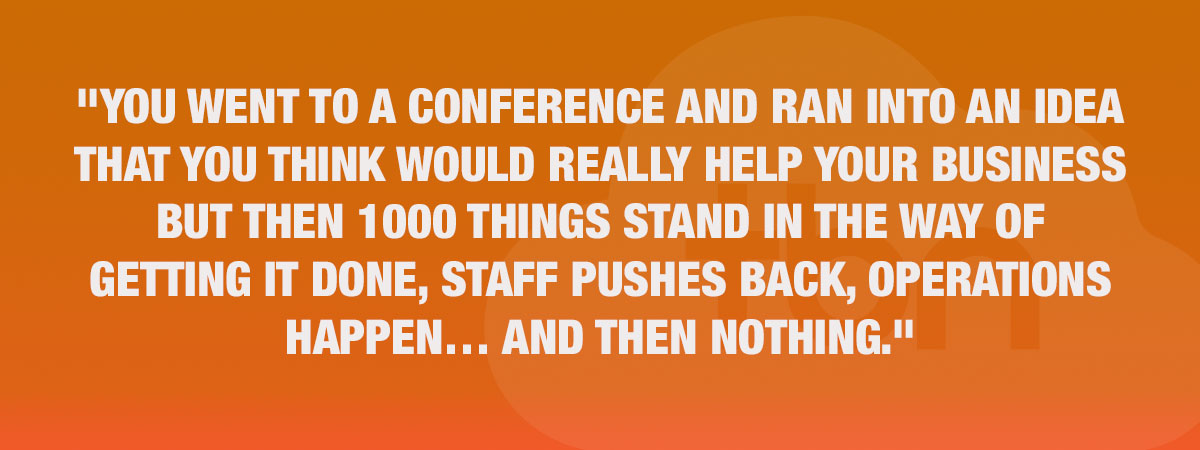
TBN Partners with FiServ and Clover Connect
September 27, 2022
TBN on the Motorcoach Channel
March 27, 2023Battling implementation paralysis
What is Implementation paralysis- and how do I know if I have it?

You went to a conference or were on a zoom call and ran into an idea that you think would really help your business. Let’s say it is revolutionary cloud-based technologies that would revolutionize sales and operations in your company… Just for argument’s sake.
You leave and go back to your office, and…. 1000 things stand in the way of getting it done, staff pushes back, operations happen… and then nothing. You then find yourself at the same meeting the following year… having the same conversations and being excited about doing the same thing…because doing it will make everything easier, make you and your team more productive, and make you more money… but you leave and….
That, in a nutshell, is implementation paralysis. It’s an inability to move the ball forward, even on balls you know are a great fit and get you excited.
If this scenario has you tingling… with that “yeah, that’s me” kind of feeling, you probably have it. You may have the walking around version or the downright textbook clinical study version, but you probably have it!
The prescription for implementation paralysis.
First, operations trump implementation. That’s a given in the group travel market. We can’t believe that somehow we are going to overcome that reality. But… and there is a but here, it can be worked around. There is a feeling for many operators that there exists a day when the stars will align, and everyone will be ready to implement. The truth is that busy days turn into busy weeks and months, often followed by less busy times where the last thing we want to do is take on a project like implementing change.
This reality is change needs a champion, and in most cases, that champion needs to be someone who is “operationally unimportant.” That can sound like a tall order, but in many cases, such as the case of the “revolutionary cloud-based technology” mentioned above, a third party can stand in as that person and help clear the hurdles that need to be cleared. Ask about Concierge deployment services… trust us…
Next, it’s essential to realize that change is hard for most people. Even in the most broken systems moving to the most modern and convenient systems, you will experience resistance from those who want to “do it the way we always have.” One of the drivers of paralysis is waiting for staff to all buy in fully and have no concerns about the change. This rarely happens. Most times, there comes the point, after working to emotionally enroll the team, that you will have to leave the dock with a few “worries” still unanswered but reassuring the group that “whatever comes up, we will tackle it together.”
Finally, and this is perhaps the most significant step in breaking the paralysis cycle, you have to leave the dock. Realizing that there will never be that “perfect time” that we hope will exist in some version of the future and simply setting sail, albeit at a time that there is some focus to give the transition, must be done.
What symptoms can you expect as you break the paralysis cycle?
If this were a drug commercial on TV, this would be the part where we would say that you can expect these symptoms after taking this medicine. In this case, implementation for those who have implementation paralysis can lead to feelings of worry and feelings of wanting to delay. In many cases, as the date you picked draws near and you start to see that the boat is going to leave the dock, you will feel the need to delay, pause, or otherwise “slow the roll.” This is normal, and with the help of your partner at the aforementioned technology provider (wink wink), you will get over it and “maintain course and speed.”
This new “implementing” version of yourself will also be tempted to turn and look away at the first signs of success. Part of this new you understands what success of that implementation looks like. In this case, that is not only deployment but successfully using it to its full potential and seeing the results of that in your business. It is also watching to pull out the weeds of “sneaking back to the old ways” that will inevitably pop up.
What are the keys to success in beating implementation paralysis?
Success, even for the most affected victim of implementation paralysis, will be easier if the following steps are made-
1: admit that you have a problem and you need help! This sounds funny and maybe like a step from another recovery program, but it’s the first step in those programs because it’s important. For example, if you believe that making a change to something in your business, say, for example, sales and operations, will make things easier, better for your customers, and put more revenue on the bottom line, and you have trouble getting that implemented… admitting it is the first step to recovery!
2: Get help: that help may come from within your organization, where you empower someone (preferably not operationally critical) to be the champion of the project. It may also be a third party, say someone from the company you hope to use or a third party like a temporary employee brought in to manage the change.
3: Get clear: Sign up, pick dates, set expectations, have meetings, address concerns, get buy-in, and make commitments.
4: Create accountability: Ask people to be accountable to you and the person(s) helping move the project forward. Decide that you will be acceptable to them as well. Empower them to hold you and your team accountable to commitments and pledge your support to help them get it.
5: Set sail: Leave the dock when you said you were going to leave the dock. Push aside the voices in your head that will inevitably try to get you to postpone or wait on that one day that things will be easier. Instead, move forward, take steps, and make progress.
6: Stay involved: Good leaders understand that part of a successful implementation is long-term adoption, use, and refinement. Be the leader your team needs and stay in the process long after the tool is deployed. Ask your team how it is going, look for opportunities to understand their resistance, and find ways to steer them back on track. Advocate for them with the company you work with and find ways to provide training and support that work for them. Watch for indications that adoption is slipping and help them maintain the vision of success in the deployment.
Final Thoughts.
The truth is we all suffer from implementation paralysis at some point. We may call it procrastination or even disguise it as “a business decision,” but at the end of the day, if it stands in the way of our ability to evolve as a company, it needs to be addressed.
Very few things in business are done the same way they were 20, 30, 40, or 50 years ago that we could look to as processes or procedures that should not be changed. From accounting to customer service, maintenance to sales, the world has changed and continues to at an ever-increasing rate. This means that we must evolve, and to do so, we must implement change.
For group travel, the need for change has never been more defined. Uber, and other technology companies, continue to move farther into the space. But, without response and subsequent implementation, we may find ourselves sitting on the sidelines watching as customers get what they want from other providers.
If you want to implement change to your sales and operations. We can help… and by help, we mean help move you past implementation paralysis into the world of successful deployment!




